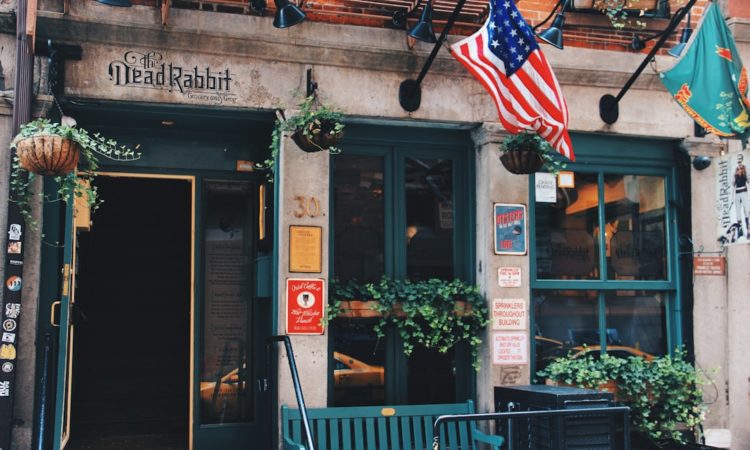
The origins of African masks are deeply rooted in the continent's rich and diverse cultures. These masks are not only works of art, but also powerful symbols that reflect the history, traditions and beliefs of different communities. One can imagine that the first masks arose from the need to explore the spiritual world and communicate with the ancestors.
In many African societies, masks are used during rituals and ceremonies, forming a bridge between the physical and spiritual worlds. The creation of these masks is often a collective effort, with artisans passing on their skills and knowledge to the next generation. In addition, African masks are often associated with specific ethnic groups and their unique stories.
Each community has its own style, techniques and meanings attached to the masks. This makes studying these masks not only an artistic endeavor, but also a way to understand the diversity of African cultures. One can imagine that wearing a mask during a ceremony is not only a visual experience, but also establishes a deeper connection to the history and traditions of the people.
So the origin of these masks is not only a matter of art, but also of identity and community.
Summary
- African masks have their origins in traditional African culture and are used for a variety of purposes, including rituals and ceremonies.
- There are different types of African masks, each with its own meaning and symbolism, such as masks for harvest ceremonies, fertility rituals and healing ceremonies.
- African masks play an important role in traditional culture and rituals, being used to ward off evil spirits, promote healing and connect the community.
- Specific materials such as wood, clay, fabric and beads are used in the making of African masks, each of which has symbolic meaning and contributes to the power of the mask.
- African masks have had a major influence on modern art and culture, using them as inspiration for contemporary artists and designers.
Different kinds of African Masks and hul betekenisse
There are numerous types of African masks, each with their own unique characteristics and meanings. For example, you can think of the Bwa maskke from Burkina Faso, which are often characterized by geometric patterns and bright colors. These masks are used during rituals related to the harvest and welfare of the community.
On the other hand, there are the Fang-maske from Gabon, which often have a more stylized and abstract form. These masks are often used in initiation rituals and symbolize the transition to adulthood. It is fascinating to see how each type of mask tells its own story and plays a specific role within the culture.
In addition, there are also masks designed specifically for dance and theater performances. These masks are often vibrant and expressive, meant to convey emotions and engage the audience. One can imagine that the dancers wearing these masks not only display their physical skills, but also convey the cultural values and stories of their community.
The use of different materials, such as wood, fabric and metal, also adds to the meaning of each mask. Each material has its own symbolism and can vary depending on the region and available resources. This makes studying African masks a fascinating journey through time and space.
That role of that African Mask in traditional culture and ritual

The role of African masks in traditional culture and rituals is undeniable. One can imagine that these masks serve not only as decoration, but also as essential elements in ceremonies marking important life transitions, such as birth, marriage and death. During these rituals, masks are often worn by specially selected individuals who act as intermediaries between people and spirits.
This creates a sense of connection with ancestors and strengthens social cohesion within the community. Wearing a mask can also be a way to hide personal identity, allowing the wearer to transform into a spiritual being. Moreover, African masks play a crucial role in teaching values and norms within the community.
One can imagine that stories told through these masks contain important life lessons that are passed down from generation to generation. This makes the use of masks not only an artistic expression, but also an educational experience for younger generations. The rituals in which these masks are used are often filled with music, dance and song, contributing to a sense of belonging and celebration within the community.
Clearly, African masks are much more than objects; they are living witnesses to culture and tradition. (Source: The Metropolitan Museum of Art)
That manufacture of African Masks and that use of specific materials
| Mask Type | Material Use | Number Manufactured |
|---|---|---|
| Boerboel Mask | Wood, Copper | 25 |
| Leeu Mask | Leather, Beads | 15 |
| Elephant Mask | Papier-mâché, Paint | 20 |
The making of African masks is a craft that is often passed down for generations within families or communities. As you can imagine, the process begins with selecting appropriate materials, such as wood, clay or even metal. Each material has its own unique properties that influence the final design and appearance of the mask.
Wood, for example, is popular for its durability and workability, while clay is often used for more detailed designs. Thus, choosing the right material is crucial to creating a mask that is both aesthetically pleasing and functional. In addition, the creative process itself plays an important role in the significance of the mask.
As you can imagine, artisans need not only technical skills but also a deep understanding of the cultural context in which they work. Designing a mask often requires inspiration from traditional stories, symbols and rituals. This makes each mask unique and full of meaning.
Painting and decorating the mask is also an essential part of the process; colors and patterns are carefully chosen to convey specific messages. The result is not only a beautiful work of art, but also a powerful symbol that reflects the community's values and beliefs.
That influence of African Masks on modern arts and culture
African masks have had a significant influence on modern art and culture, both inside and outside of Africa. One can imagine artists around the world being inspired by the unique shapes, colors and meanings of these masks. In the early 20th century, Western artists such as Pablo Picasso and Henri Matisse began to incorporate elements of African art into their work, leading to new movements such as Cubism.
This cross-pollination between different cultures has led to a revaluation of non-Western art forms and contributed to a wider acceptance of diversity in artistic expression. Moreover, African masks are now often used in fashion, design and popular culture. You can imagine designers inspired by these masks creating unique garments that combine elements of traditional African art with modern styles.
This has led to a reinterpretation of cultural symbols in a contemporary context, provoking both positive and negative reactions. While some see this fusion as a celebration of cultural diversity, others see it as cultural appropriation. Nevertheless, the influence of African masks on modern art remains undeniable, demonstrating how powerful these cultural artifacts can be in shaping contemporary aesthetics.
That meaning of color and patrone on African Masks

The colors and patterns on African masks carry profound meanings that vary depending on the region and culture. One can imagine that each color represents something specific; for example, black may symbolize strength or mourning, while white is often associated with purity or spiritual enlightenment. Red can represent life or blood, while green is often associated with fertility or nature.
These colors are carefully chosen to convey emotions or to communicate certain messages during rituals or ceremonies. Patterns on African masks are also rich in meaning and can refer to specific stories or mythologies within a community. You can think of geometric shapes that can be symbolic of elements of nature or abstract representations of animals or people.
The use of repeating patterns may also indicate continuity or connection to ancestors. This makes each mask not only a visual object, but also a narrative medium that tells stories of identity, history and culture. So the meaning behind colors and patterns adds an extra layer to the overall experience of viewing or wearing an African mask.
Die gebruik van Afrikaanse Maskers in huidige tyd en hul impak op die samelewing
In modern times, African masks continue to play an important role in various communities across the continent. One can imagine that they continue to be used in traditional rituals as well as in modern contexts such as festivals and cultural events. This renewed interest in African masks not only helps keep cultural traditions alive, but also promotes awareness about the rich history and diversity within Africa.
The use of these masks can serve as a source of pride for communities seeking to celebrate their heritage. Moreover, African masks also affect social issues within societies. You can think about how they are used as tools for education on important issues such as identity, racism and cultural appreciation.
Through workshops, exhibitions and educational programs, people can learn more about the meaning behind these masks and their role in society. This contributes to greater understanding between different cultures and promotes dialogue about cultural diversity. The impact of African masks thus extends beyond art; they play a crucial role in promoting social cohesion and cultural appreciation in our increasingly globalized world.
Die bewaring en beskerming van Afrikaanse Maskers as kulturele erfenis
The preservation and protection of African masks as cultural heritage is essential for maintaining identity and history within communities. As you can imagine, many masks are vulnerable to decay through neglect or commercial exploitation. Therefore, it is important that communities work to preserve them through education, restoration projects and collaboration with museums or cultural institutions.
This helps not only to protect physical objects, but also to keep alive the stories and traditions associated with them. In addition, technology is playing an increasing role in preserving these cultural artifacts. One can think of digital archiving or 3D scanning as ways to capture information about African masks without physically damaging them.
This allows knowledge to be shared with future generations without compromising the original object. However, the challenge remains to ensure that these efforts are done respectfully, taking into account the cultural sensitivities surrounding these masks. Thus, their preservation is not just a matter of physical protection; it is also about ensuring that their meaning and value are recognized within both local and global contexts.
If you are interested in cultural items such as the African mask, you might also find the article on what not to forget on your packing list for a weekend away interesting. This article offers useful tips that can help you prepare for your trip so you don't forget anything essential. You can read the full article by clicking on the following link: Don't forget this on your packing list for a weekend away.
FAQs
What is an African mask?
An African mask is a traditional work of art used in various African cultures for ritual, spiritual and ceremonial purposes. These masks are often made of wood, metal, fabric or other materials and are decorated with symbolic patterns and images.
What is the significance of African masks?
The meaning of African masks varies depending on the specific culture and tradition they come from. In general, these masks are used in rituals, ceremonies, dances and other cultural events to strengthen the connection with ancestors, spirits and gods, ward off evil spirits, promote healing or communicate social norms and values.
How are African masks made?
African masks are often handmade by specialized artisans or artists. The materials and techniques used vary depending on the region and tradition. Wood carving, metalwork, textile art and the use of natural pigments are some of the common methods used in making African masks.
What are African masks used for?
African masks are used for a variety of purposes, including rituals, ceremonies, dancing, theater, healing, protection and social communication. They play an important role in the cultural and spiritual practices of various African communities and are often considered sacred objects with deep symbolic meanings.






